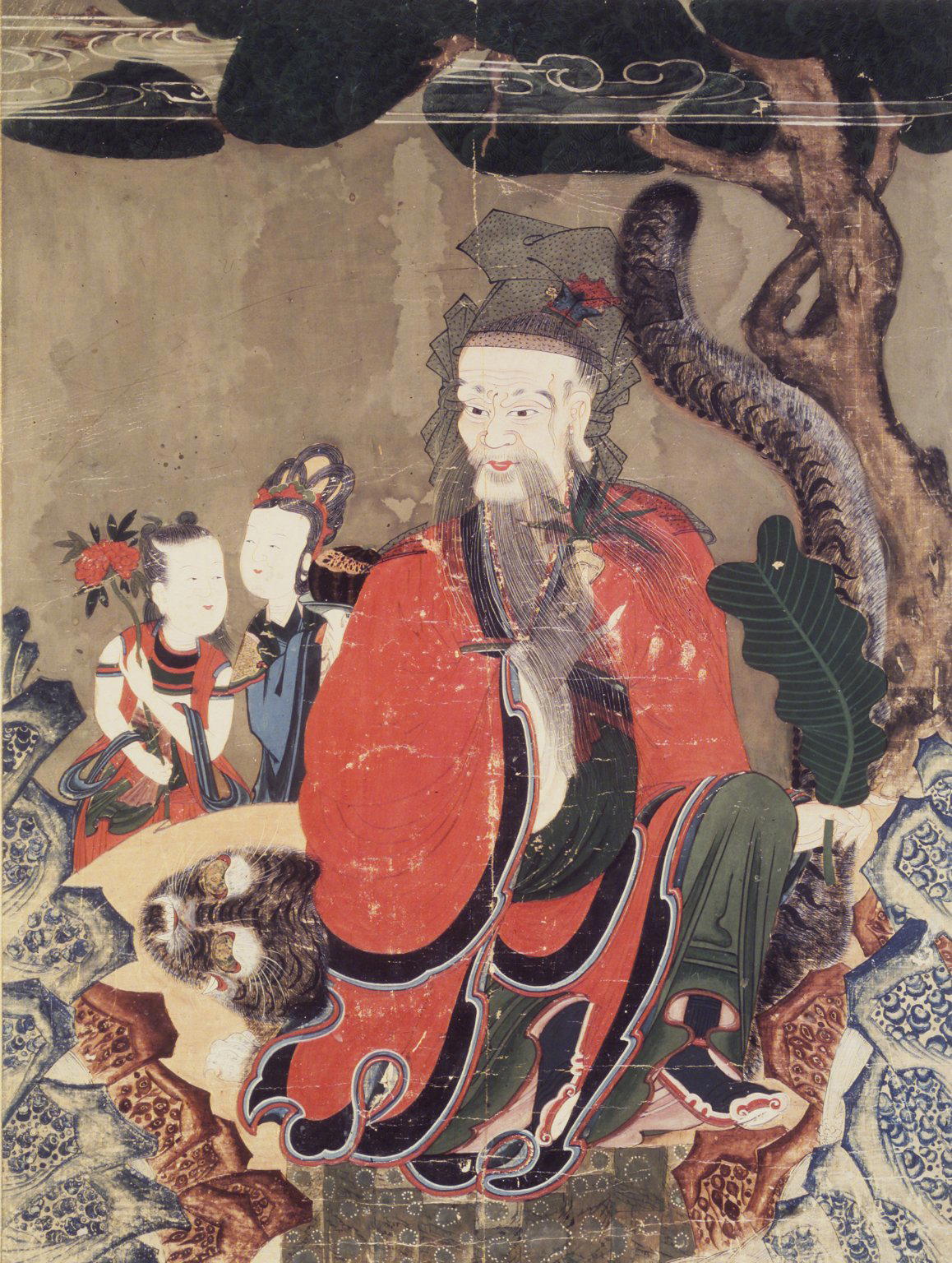Mountain Spirit (Sanshin)

Brooklyn Museum photograph
Caption
Mountain Spirit (Sanshin), 19th century. Ink and color on silk, Image: 34 x 24 1/2 in. (86.4 x 62.2 cm) Overall: 43 1/4 x 34 1/2 in. (109.9 x 87.6 cm). Brooklyn Museum, Designated Purchase Fund, 84.145. No known copyright restrictions (Photo: Brooklyn Museum, 84.145.jpg)
Gallery
Not on view
Collection
Gallery
Not on view
Collection
Title
Mountain Spirit (Sanshin)
Date
19th century
Dynasty
Joseon Dynasty
Geography
Place made: Korea
Medium
Ink and color on silk
Classification
Dimensions
Image: 34 x 24 1/2 in. (86.4 x 62.2 cm) Overall: 43 1/4 x 34 1/2 in. (109.9 x 87.6 cm)
Credit Line
Designated Purchase Fund
Accession Number
84.145
Rights
No known copyright restrictions
This work may be in the public domain in the United States. Works created by United States and non-United States nationals published prior to 1923 are in the public domain, subject to the terms of any applicable treaty or agreement. You may download and use Brooklyn Museum images of this work. Please include caption information from this page and credit the Brooklyn Museum. If you need a high resolution file, please fill out our online application form (charges apply). The Museum does not warrant that the use of this work will not infringe on the rights of third parties, such as artists or artists' heirs holding the rights to the work. It is your responsibility to determine and satisfy copyright or other use restrictions before copying, transmitting, or making other use of protected items beyond that allowed by "fair use," as such term is understood under the United States Copyright Act. The Brooklyn Museum makes no representations or warranties with respect to the application or terms of any international agreement governing copyright protection in the United States for works created by foreign nationals. For further information about copyright, we recommend resources at the United States Library of Congress, Cornell University, Copyright and Cultural Institutions: Guidelines for U.S. Libraries, Archives, and Museums, and Copyright Watch. For more information about the Museum's rights project, including how rights types are assigned, please see our blog posts on copyright. If you have any information regarding this work and rights to it, please contact copyright@brooklynmuseum.org.
Frequent Art Questions
The hat paired with Mountain Spirit, wow!
Yes. The connection is quite interesting. The hat is actually meant to resemble mountain peaks. The horsehair used to make the scholar's hat is also the same material the Mountain Spirit's hat is made of!Tell me more.
This painting features a Mountain Spirit or Sanshin, a figure from Korean Shamanism. Different Areas could have different Mountain spirits, who were associated with fertility and abundance and with protection, especially of babies.Korean Buddhism absorbed shamanist beliefs and practices, and so a shrine to the Mountain Spirit could often be found in a buddhist temple. Women would go to the shrine to hold vigil (in extreme cases for as many as 100 days) and pray for pregnancy, and especially a male baby.What does the term "shamanist" religion refer to in a Korean context?
Korean Shamanism was closely tied to nature. An example of a shamanist deity is the Mountain Spirit represented in this painting.Korean Shamanism shares roots with Chinese Taoism and was later absorbed by the Korean approach to Buddhism.Thanks, so interesting!
Have information?
Have information about an artwork? Contact us at